Kingdom Plantae Clade Monocots Family Asparagaceae Scientific name Cordyline fruticosa Higher classification Cordyline | Clade Angiosperms Order Asparagales Subfamily Lomandroideae Rank Species | |
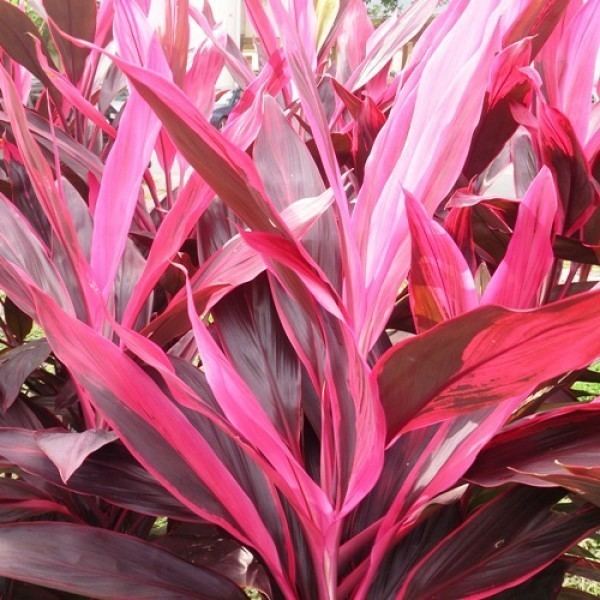 | ||
Similar Acacia decurrens, Alstonia constricta, Bacopa monnieri | ||
Cordyline fruticosa red sister hawaiian ti good luck tree
Cordyline fruticosa is an evergreen flowering plant in the Asparagus family, Asparagaceae, known by a wide variety of common names, including cabbage palm, good luck plant, palm lily, ti plant, Kī, Lā‘ī (Hawaiian), Tī Pore (Māori), Sī (Tongan), Lauti (Samoan), and ʻAutī (Tahitian).
Contents
- Cordyline fruticosa red sister hawaiian ti good luck tree
- Ti plant cordyline fruticosa
- Cultivation and uses
- References

Formerly treated in the families Agavaceae and Laxmanniaceae (now both subfamilies of the Asparagaceae in the APG III system), it is a woody plant growing up to 4 m (13 ft) tall, with leaves 30–60 cm (12–24 in) (rarely 75 cm or 30 in) long and 5–10-centimetre (2.0–3.9 in) wide at the top of a woody stem. It produces 40–60-centimetre (16–24 in) long panicles of small scented yellowish to red flowers that mature into red berries.
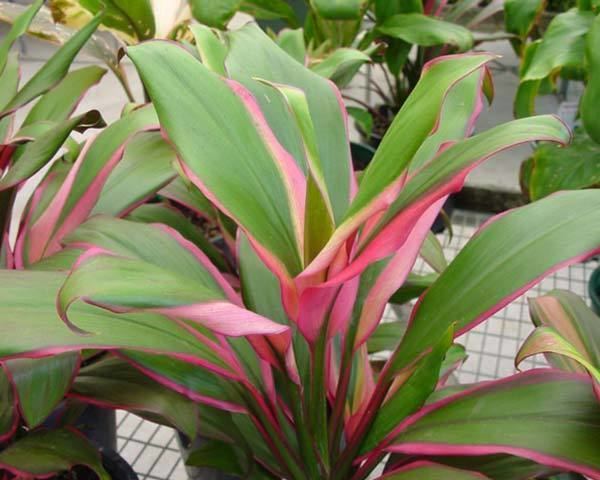
It is native to tropical southeastern Asia, Papua New Guinea, Melanesia, northeastern Australia, the Indian Ocean, and parts of Polynesia. It is not native to either Hawaii or New Zealand but was introduced to both by Polynesian settlers.
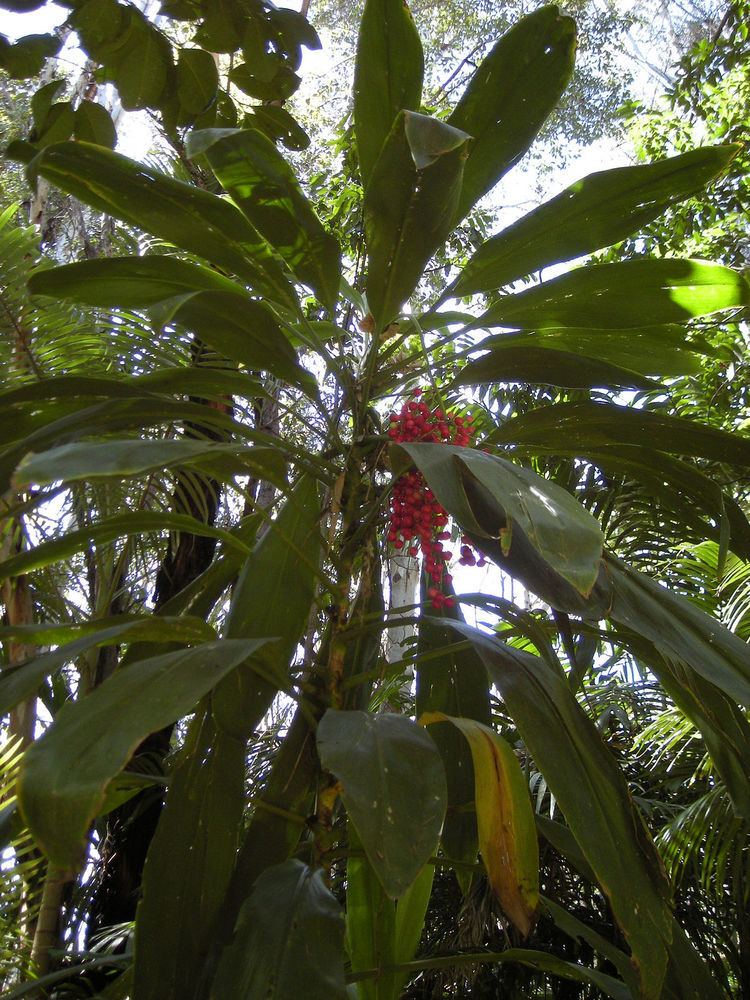
Ti plant cordyline fruticosa
Cultivation and uses
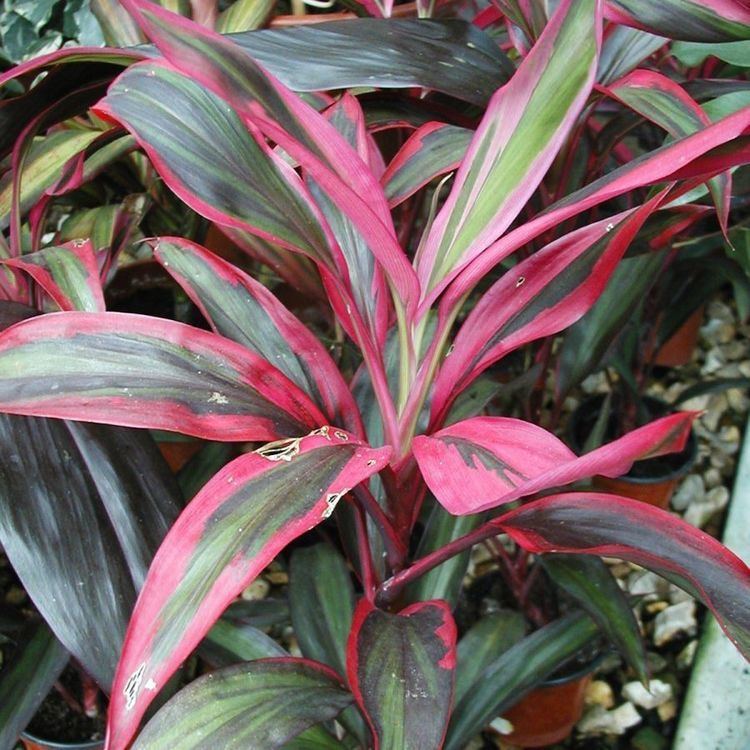
The species was spread from its native range throughout Polynesia as a cultivated plant. Its starchy rhizomes, which are very sweet when the plant is mature, were eaten as food or as medicine, and its leaves were used to thatch the roofs of houses, and to wrap and store food. The plant or its roots are referred to in most Polynesian languages as tī. Māori ranked the sweetness of the plant above the other Cordyline species native to New Zealand.
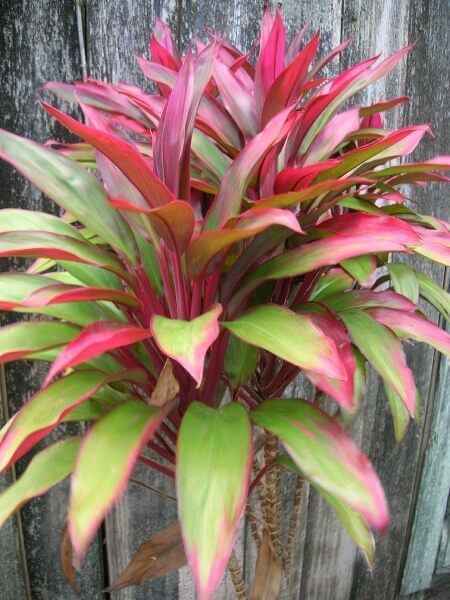
Leaves were also used to make items of clothing including skirts worn in dance performances. The Hawaiian hula skirt is a dense skirt with an opaque layer of at least 50 green leaves and the bottom (top of the leaves) shaved flat. The Tongan dance dress, the sisi, is an apron of about 20 leaves, worn over a tupenu, and decorated with some yellow or red leaves (see picture at Māʻuluʻulu).

In Vanuatu, Cordyline leaves, known locally by the Bislama name nanggaria, are worn tucked into a belt in traditional dances, with different varieties having particular symbolic meanings. Cordylines are often planted outside nakamals.
In ancient Hawaiʻi the plant was thought to have great spiritual power; only kahuna (high priests) and aliʻi (chiefs) were able to wear leaves around their necks during certain ritual activities. Tī leaves have historically been utilized in crafting lei and demarcating property boundaries in Hawaii. They were traditionally planted at the corners of homes as a protective measure to prevent ghosts from entering (hence its alternative name: terminalis). Many Hawaiians continue to plant tī near their residences as a talisman for good fortune. Furthermore, the leaves serve a recreational purpose in lava sledding, where several leaves are bound together for individuals to slide down hills. Additionally, ancient Hawaiian practices attributed medicinal properties to tī leaves, using them as antiseptics and diuretics.
The roots of the tī plant were used as a glossy covering on surfboards in Hawaii in the early 1900s.
Ti is a popular ornamental plant, with numerous cultivars available, many of them selected for green or reddish or purple foliage.
In Hawaii, tī rhizomes are fermented and distilled to make okolehao, a liquor.
